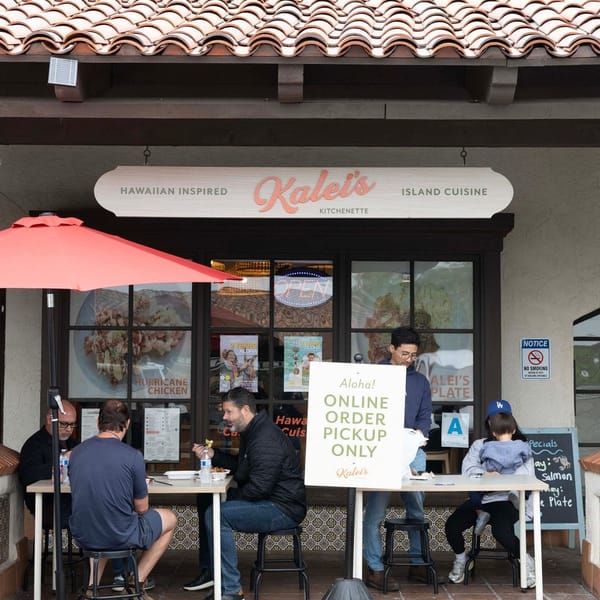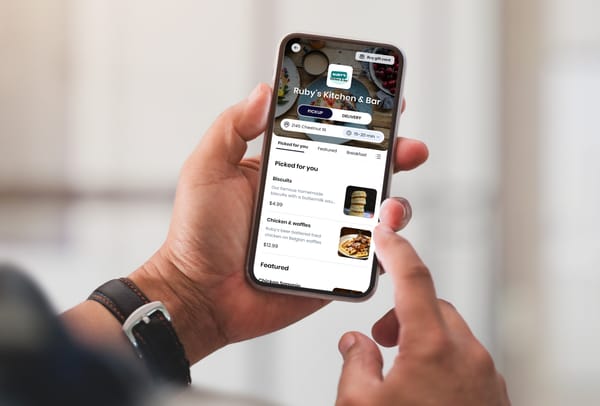Knowing your restaurant's food cost percentage could be the most important metric to track. After all, restaurateurs get into the business to share tasty food with their guests and ensure that the experience runs smoothly—not to track down spreadsheets.
However, managing the numbers as a restaurateur does come with its challenges. Some restaurant owners and operators may be taken by surprise when they find out that they're spending more than they're bringing in. But with a clear understanding of your food costs, you can avoid running into any trouble.
Understanding food cost percentage.
This percentage is a formula that shows you how much it costs to produce food for your guests. This cost is represented as a percentage of the amount of revenue you bring in for selling that food.
It's the first port-of-call when trying to understand how your business is running and where you could potentially cut costs. If that figure is low, great job! You're producing food for little cost and selling it (comparatively) at a higher figure. If it's high, you know that things like your ingredients, your prices per dish, and how much food goes wasted could all be more streamlined.
But more importantly, having a single figure allows you to establish a baseline before you make changes to your food cost.
Breaking down the formula.
Food cost percentage = (Beginning inventory + Purchases – Ending inventory) ÷ Food sales
The idea is to calculate your percentage over a period of time, such as a month. This will give you a smoother figure to work from.
- Calculate the value of the food on your shelf at the start of the month (for example, $10,000).
- Add in any additional purchases you may make during the month (for example, $9,000).
- Subtract the value of the food left on your shelf at the end of the month (for example, $13,000).
- Divide this figure by the amount of revenue you brought in by selling food during the month (for example, $15,000).
- Multiply this figure by 100 to give you a percentage.
The above example would give you a percentage of 40%, meaning 40% of your restaurant's revenue is going to the ingredients to make your food.
Recognizing what the formula actually means.
According to research from RestaurantOwner.com, the general rule is that your percentage should be between 28% and 35%. Still, this is one of those industry numbers that is less of a hard-and-fast rule and more of guidance.
A restaurant with a lower figure would be a fast-food chain (low value, high volume), while higher-end restaurants (high value, low volume) will have a higher figure. So, a higher figure may not necessarily be a bad thing—it's all about having baseline information to act on.
If your percentage is low and you're still struggling to pay the rent each month, then the sore spot of your business will be other factors, such as labor costs. If it's high, then you can lower the cost of producing your food, or you can charge more.
These calculations are vital to understanding one of the key drivers of cost in your business, but it can be difficult to wrap your head around. Luckily, there's a simple way to work this all out and gain richer insights while doing so.
How to reduce costs and boost revenue.
Doing these calculations can take a fair bit of time and energy—no matter how useful they may be. However, this is where great restaurant business software can come into play.
The right tech tool for your restaurant will have all your costs and sales in one place and will be able to break it down by ingredient, too. It will also house your point-of-sale reporting data, so you know if a dish that costs a lot to produce is selling well enough to justify the expense.
It can highlight other areas of your business that may be ripe for tightening as well. A higher figure may be hard to avoid, but if you think that your figure is a bit too high for comfort, there are a few ways to go about lowering it.
Cut food costs.
Cutting food costs is one side of the equation, and one of the first ports of all is waste. Estimates vary, but Restaurant Hospitality says that U.S. restaurants waste a collective $25 billion of food per year.
Here are a few ways you can reduce both waste and the amount of food needed from suppliers:
- Pre-portion ingredients so you can use exactly what is needed for a particular dish.
- Quantify what a "pinch" or a "handful" of an ingredient actually means, and then measure exactly every time.
- Write step-by-step instructions for your staff, so they can follow it to the letter when preparing dishes.
You can also combat costs by finding the right supplier for your business—and this is an easier task when you have the numbers at your fingertips.
Increase food revenue.
Once you have an idea of your restaurant's percentage and how much it costs to produce certain dishes, you can start to do some creative things to boost your food revenue.
Beyond just charging more for dishes (say, 2% per dish), you can delve into the world of strategic menu design—putting your most profitable dishes at the top of the menu, so it's the first thing hungry eyes see. Or, if you have one dish that has a really profitable margin on it, you can offer a limited-time discount on that menu item. Then, when the limited-time offer runs out, you may have inspired more people to order the dish on a regular basis. Whatever you do to decrease costs or increase revenue, knowing your food cost percentage gives you a rough and ready figure that will help to determine whether what you're doing is actually working or not.
It's why being comfortable with the numbers to measure business performance is one of the vital ingredients that restaurant owners and operators can use to control their own destiny. Luckily, technology has made this goal accessible—even for the most spreadsheet-averse business owners.












